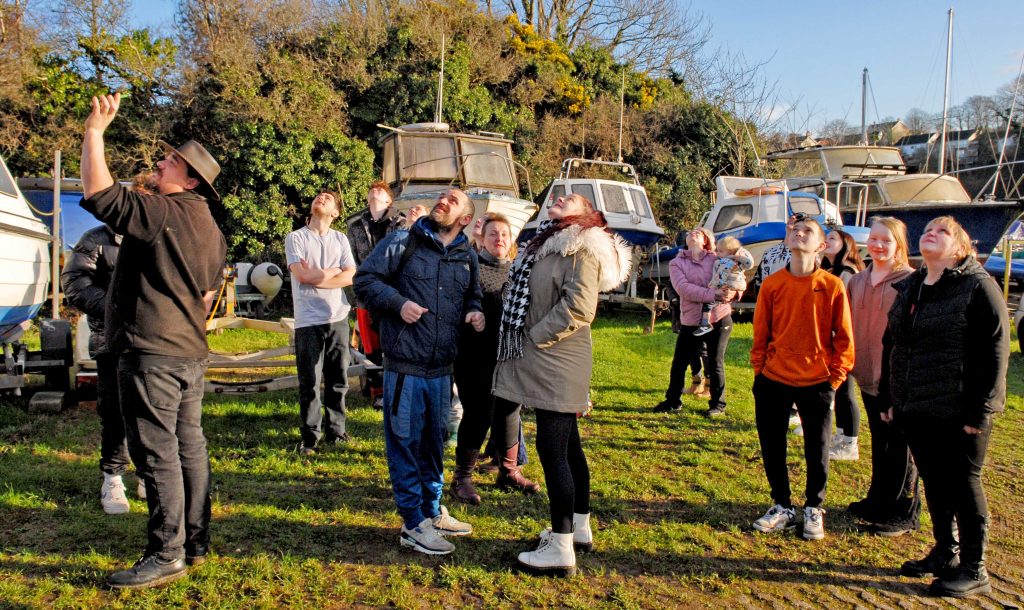News
Investigating the Technological Advancements Beyond Bitcoin:Altcoin Research

Cryptocurrencies have come a long way since the inception of Bitcoin in 2009. While Bitcoin remains the poster child of the digital currency revolution, a multitude of other cryptocurrencies, often referred to as “altcoins,” have emerged, each with unique features and innovations. Navigating this complex landscape, https://theflik.io/ offers educational insights without focusing on potential profits. In this article, we will delve deep into the world of altcoins, exploring their technological advancements, use cases, investment potential, and regulatory considerations.
What Are Altcoins?
Altcoins, short for “alternative coins,” encompass any cryptocurrency other than Bitcoin. They represent a diverse range of digital assets designed to address specific challenges or provide unique functionalities. While Bitcoin is primarily a digital store of value and medium of exchange, altcoins come in various forms and serve distinct purposes.
Technological Advancements in Altcoins
Smart Contracts and Programmability
Ethereum, created by Vitalik Buterin in 2015, was the first blockchain to introduce smart contracts, self-executing agreements with code that automatically executes when predefined conditions are met. This innovation paved the way for decentralized applications (DApps) and ushered in the era of programmable blockchain platforms.
Beyond Ethereum, platforms like Binance Smart Chain and Solana offer compatible smart contract functionality, but with different scalability and cost profiles. Solana, for instance, uses a unique consensus mechanism called Proof-of-History to enable faster and cheaper transactions.
Privacy and Anonymity Features
Privacy is a significant concern in the cryptocurrency space, and several altcoins focus on enhancing it. Monero, for instance, utilizes advanced cryptographic techniques to obfuscate transaction details, making it nearly impossible to trace sender, receiver, or transaction amount.
Zcash, another privacy-focused altcoin, leverages zero-knowledge proofs to enable selective disclosure of transaction information. These technologies provide users with enhanced privacy options compared to Bitcoin’s pseudonymous ledger.
Scalability Solutions
As cryptocurrencies gain popularity, scalability becomes a critical issue. Layer 2 solutions like the Lightning Network for Bitcoin and Optimistic Rollups for Ethereum aim to improve transaction throughput and reduce fees by processing transactions off-chain or in a more efficient manner.
Additionally, Ethereum is working on implementing sharding, a technique that divides the blockchain into smaller, interconnected pieces, further enhancing scalability. Alternative blockchains like Polkadot also offer sharding capabilities, allowing for horizontal scaling and the creation of multiple interconnected blockchains.
Interoperability and Cross-Chain Solutions
Cross-chain compatibility is crucial for the seamless exchange of assets and data between different blockchain networks. Polkadot, an interoperable blockchain platform, connects multiple blockchains into a unified ecosystem, facilitating cross-chain communication and asset transfers.
Cosmos, another interoperability project, uses the Inter-Blockchain Communication (IBC) protocol to enable secure and efficient communication between sovereign blockchains, fostering a truly interconnected blockchain space.
Altcoins Driving Innovation
DeFi (Decentralized Finance) and Lending Platforms
Decentralized finance has emerged as one of the most transformative use cases for blockchain technology. Altcoins like Compound, Aave, and MakerDAO are pioneering the DeFi space by offering lending, borrowing, and yield farming services, all without the need for traditional financial intermediaries.
Sustainable and Eco-Friendly Altcoins
Environmental concerns associated with Bitcoin’s energy-intensive proof-of-work (PoW) consensus mechanism have prompted the development of eco-friendly alternatives. Altcoins like Cardano, Algorand, and Tezos utilize proof-of-stake (PoS) or other energy-efficient consensus mechanisms, reducing their carbon footprint.
Investment and Risks in Altcoins
Opportunities for Investors
Investors have recognized the potential of altcoins to offer diversification and potentially higher returns than Bitcoin. However, it’s crucial to research and understand each altcoin’s technology, use case, and team before investing.
Challenges and Risks
Altcoin investments come with risks, including market volatility, regulatory uncertainty, and the potential for project failure. Due diligence is essential to mitigate these risks and make informed investment decisions.
Diversification Strategies
Diversifying a cryptocurrency portfolio beyond Bitcoin can reduce risk and capture potential upside in various market conditions. Investors should carefully consider their risk tolerance and investment goals when crafting a diversified portfolio.
Regulatory Considerations
Evolving Regulations
The regulatory landscape for cryptocurrencies is evolving rapidly, with governments worldwide seeking to establish clear guidelines. Altcoin investors and projects should stay informed about changing regulations and ensure compliance with relevant laws.
Tax Implications
Taxation of altcoin transactions can be complex and varies by jurisdiction. It’s essential to understand tax obligations related to buying, selling, and trading altcoins to avoid legal issues.
Compliance and KYC
Altcoin projects may require compliance with Know Your Customer (KYC) and Anti-Money Laundering (AML) regulations. Users should be prepared to provide identification and undergo verification processes on exchanges and platforms.
Future Outlook and Conclusion
As the cryptocurrency landscape continues to evolve, altcoins will play a vital role in shaping the future of decentralized technology. The potential for innovation, scalability, and utility offered by altcoins is immense, making them an essential part of the blockchain ecosystem. Investors and enthusiasts alike should closely monitor this dynamic space, embracing the opportunities and challenges it presents. The journey beyond Bitcoin is just beginning, and the possibilities are limitless.
Community
Community gathers to remember Corrina Baker

Lanterns and balloons released in emotional acts of remembrance
FAMILY, friends and members of the local community came together to remember Corrina Baker at a series of moving events held across west Wales this week.
Corrina’s funeral took place on Monday (Dec 15), a month after her death, with a public service held at St Mary’s Church. Mourners lined the route as her coffin was carried on its final journey in an elegant horse-drawn carriage, before a private cremation later took place at Parc Gwyn crematorium in Narberth.

Later that evening, shortly after 6:00pm, friends and relatives gathered at the Quayside in Cardigan for the first of two acts of remembrance to celebrate her life. Lanterns were lit and released into the night sky above the town as some of Corrina’s favourite songs were played.






On Tuesday afternoon (Dec 16), a second tribute was held near the location where Corrina was found. Twenty-one pink balloons — one for each year of her life — were released into a clear blue sky, each carrying personal messages in her memory.
Floral tributes continue to be laid at the Netpool, while a GoFundMe appeal set up in Corrina’s memory has raised more than £2,300. She has been described by those who knew her as “funny and bright”.
Dyfed-Powys Police have confirmed that their investigation into the circumstances surrounding Ms Baker’s death is ongoing. A 29-year-old man who was arrested on suspicion of murder has been released on bail while inquiries continue.
(Photos: Stuart Ladd/Herald)









Community
Six untaxed vehicles seized in Milford Haven police operation

SIX untaxed and abandoned vehicles were seized during a joint roads policing operation in Milford Haven on Tuesday morning.
Officers from the Milford Haven Neighbourhood Policing and Prevention Team (NPPT) worked alongside the Pembrokeshire Roads Policing Team as part of targeted enforcement across the town.
In addition to the vehicle seizures, a number of traffic offence reports were issued to drivers during the operation.
Police said the action formed part of ongoing efforts to improve road safety and tackle vehicle-related offences in the Milford Haven area.
Community
Candlelit carol service brings community together in Milford Haven

ST KATHARINE and St Peter’s Church in Milford Haven hosted its annual Candlelit Festival of Nine Lessons and Carols, bringing together members of the community for a traditional celebration of Christmas.
The service featured readings from the Mayor of Milford Haven, representatives of the Soroptimists, Milford Haven Amateur Operatic Society, the Headteacher and Head Prefects of Milford Haven School, Milford Haven Town Band, and NCI Wooltack Point.
Music for the evening was provided by organist Seimon Morris, Milford Haven Town Band and the Milford Haven Cluster Band, whose performances added to the atmosphere of the candlelit service.
The Friends of St Katharine and St Peter’s Church thanked all those involved and wished the community a happy Christmas.

-

 Crime14 hours ago
Crime14 hours agoMilford Haven man jailed after drunken attack on partner and police officers
-

 News4 days ago
News4 days agoDyfed-Powys Police launch major investigation after triple fatal crash
-

 Crime2 days ago
Crime2 days agoMan sent to Crown Court over historic indecent assault allegations
-

 Crime2 days ago
Crime2 days agoMan charged with months of coercive control and assaults
-

 Crime4 days ago
Crime4 days agoMan spared jail after baseball bat incident in Milford Haven
-

 Crime12 hours ago
Crime12 hours agoTeenager charged following rape allegation at Saundersfoot nightclub
-

 Crime2 days ago
Crime2 days agoMilford Haven man admits multiple offences after A477 incident
-

 Education7 days ago
Education7 days agoTeaching assistant struck off after asking pupil for photos of her body













